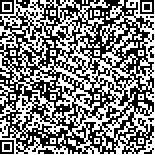| 摘要: |
| [摘要] 目的 通过电阻抗断层成像(EIT)研究急性脑损伤(ABI)并发急性呼吸窘迫综合征(ARDS)患者的动脉血气相关指标与背侧肺通气及肺血流异常的相关性。方法 收集2020年5月至2021年12月在复旦大学附属中山医院重症医学科12例ABI并发ARDS患者的EIT监测肺通气与肺血流数据,以及该时段患者动脉血气与炎症相关临床指标。根据入组患者的背侧通气感兴趣区域(ROI)之和(ROI3+ROI4),以中位数为界将患者分为背侧通气低水平组(n=6)和背侧通气高水平组(n=6)。根据动脉血二氧化碳分压(PaCO2)水平,以中位数为分界点分为PaCO2低通气组(n=6)和PaCO2高通气组(n=6)。对患者背侧通气ROI之和与乳酸等指标进行相关性分析,并计算患者EIT下死腔、分流比率及通气血流匹配水平。结果 在ABI并发ARDS的患者中,EIT背侧通气之和(ROI3+ROI4)与动脉血乳酸水平呈负相关(r=-0.700,P=0.011)。背侧通气低水平组和背侧通气高水平组动脉血气指标及炎症相关指标比较差异均无统计学意义(P>0.05)。PaCO2低通气组和PaCO2高通气组动脉血气指标及炎症相关指标比较差异无统计学意义(P>0.05)。根据可获取的5例EIT肺通气及灌注成像数据显示,患者的平均通气血流匹配水平为(49±11)%(<60%),存在通气血流匹配显著失调。结论 ABI并发ARDS患者的通气血流匹配存在显著失调,通过动脉血乳酸水平可监测背侧通气状态。 |
| 关键词: 电阻抗断层成像 急性脑损伤 急性呼吸窘迫综合征 乳酸 |
| DOI:10.3969/j.issn.1674-3806.2024.02.04 |
| 分类号:R 651.1+5 |
| 基金项目:国家自然科学基金项目(编号:82102287);上海市肺部炎症与损伤重点实验室项目(编号:2023XKPT06-RC5) |
|
| A clinical study on the association between lactic acid level and dorsal ventilation distribution in EIT in patients complicated with ARDS after acute brain injury |
|
WANG Huan1, ZHENG Xin2*, ZHONG Ming1
|
|
1.Department of Critical Care Medicine, Zhongshan Hospital, Fudan University, Shanghai 200032, China; 2.Nursing Department, Zhongshan Hospital, Fudan University, Shanghai 200032, China; *Co-first author
|
| Abstract: |
| [Abstract] Objective To study the correlation of arterial blood gas-related indicators with dorsal lung ventilation and abnormal pulmonary blood flow in acute brain injury(ABI) patients complicated with acute respiratory distress syndrome(ARDS) by using electrical impedance tomography(EIT). Methods The data of pulmonary ventilation and pulmonary blood flow monitored by EIT in 12 patients complicated with ARDS after ABI who were admitted to the Department of Intensive Care Medicine of Zhongshan Hospital of Fudan University from May 2020 to December 2021, and the patients′ arterial blood gas and inflammation-related clinical indicators during this period were collected. According to the sum of the patients′ dorsal ventilation regions of interest(ROI)(ROI3+ROI4), they were divided into low level of dorsal ventilation group(n=6) and high level of dorsal ventilation group(n=6) with median as the boundary. According to the level of partial pressure of carbon dioxide in artery(PaCO2), the patients were divided into PaCO2 hypoventilation group(n=6) and PaCO2 hyperventilation group(n=6) with the median as the boundary point. A correlation analysis was performed between the sum of the patients′ dorsal ventilation ROI and lactic acid and other indicators, and the patient′s dead space, shunt fraction, and ventilation-perfusion matching level under EIT were calculated. Results In the patients complicated with ARDS after ABI, a negative correlation was found between the sum of EIT dorsal ventilation(ROI3+ROI4) and lactic acid level in arterial blood(r=-0.700, P=0.011). The were no significant differences in arterial blood gas indicators and inflammation-related indicators between the low level of dorsal ventilation group and the high level of dorsal ventilation group(P>0.05). There were no significant differences in arterial blood gas indicators and inflammation-related indicators between the PaCO2 hypoventilation group and the PaCO2 hyperventilation group(P>0.05). According to the available EIT pulmonary ventilation and perfusion imaging data from 5 cases, the patients′ average level of ventilation-perfusion matching was (49±11)%(<60%), indicating that there was a significant mismatch in pulmonary ventilation-perfusion. Conclusion In the patients complicated with ARDS after ABI, there is a significant imbalance in ventilation-perfusion matching in them, and detection of lactic acid level in arterial blood can be used to monitor the status of dorsal ventilation. |
Key words: Electrical impedance tomography Acute brain injury(ABI) Acute respiratory distress syndrome(ARDS) Lactic acid
*共同第一作者 |

